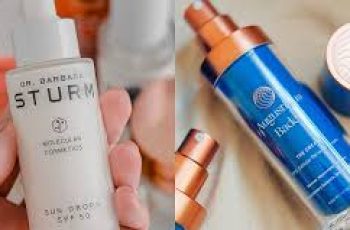
What Is Sallow Skin? Dermatologists Explain How to Treat and Prevent Dull, Tired Skin
Healthy, glowing skin can sometimes feel like a challenge to maintain. Many of us experience days when our skin looks dull or tired.
But if your skin often looks pale, yellowish, or generally lackluster, you might have what dermatologists call sallow skin.
This condition affects the natural color and vibrancy of your skin, leaving it looking dull and lifeless.
Sallow skin isn’t just about looking tired—it signals an underlying problem with your skin’s health. It can happen for many reasons, including medical issues, lifestyle habits, or environmental factors.
The good news is that with some lifestyle adjustments and the right skincare routine, sallow skin can often be treated and prevented.
To better understand sallow skin, we spoke with two board-certified dermatologists, Dr. Jodi LoGerfo and Dr. Kiran Mian.
They shared insights about what sallow skin is, what causes it, and how to bring back your skin’s natural glow.
Meet the Experts
Dr. Jodi LoGerfo, DNP, APRN, FNP-C – Dermatologist at Orentreich Medical Group.
Dr. Kiran Mian, DO, FAAD – Medical and aesthetic dermatologist at Hudson Dermatology & Laser Surgery.
What Is Sallow Skin?
Sallow skin refers to a change in your natural skin tone where it loses its usual brightness and vitality. People with lighter skin tones may notice this more clearly.
Instead of a fresh, radiant appearance, the skin takes on a dull, yellowish or brownish tint.
Dr. Mian explains that sallow skin looks dry, grayish, and less plump. It often lacks the healthy redness or “vascularity” that gives skin its youthful glow.
This means less blood flow near the surface, making the skin appear lifeless.
In short, sallow skin is a visible sign that your skin isn’t getting what it needs to stay healthy and vibrant.
What Causes Sallow Skin?
Sallow skin can develop due to many reasons. Here are the most common causes:
1. Dehydration
Not drinking enough water is one of the simplest and most common reasons for dull skin. Your skin needs water to stay plump, bright, and healthy. When you’re dehydrated, skin becomes dry and loses its shine.
Dr. LoGerfo emphasizes that dehydration reduces skin brightness over time. You may notice that your skin looks tired and sallow before you even feel thirsty.
2. Anemia and Vitamin Deficiencies
Anemia is a condition where your blood lacks enough healthy red blood cells or oxygen. This can make your skin look pale, yellow, or sallow. Vitamins also play a big role.
A lack of vitamins A, B12, C, D, and E can cause your skin to lose its vitality. Dr. LoGerfo notes that anemia reduces oxygen delivery to the skin.
Without oxygen, skin cells can’t function well, leading to dullness.
3. Smoking
Smoking damages your skin in many ways. It decreases collagen, which keeps skin firm, and breaks down elastic fibers, which help skin bounce back.
Smoking also constricts blood vessels, cutting off vital nutrients and oxygen to the skin.
Free radicals from smoking cause further damage by attacking skin cells. All of these factors speed up skin aging and make the skin appear dull and lifeless.
4. Stress and Poor Sleep
Chronic stress and lack of sleep negatively affect hormone levels, which in turn impact skin health.
Dr. LoGerfo explains that hormones, neurotransmitters, and immune signals called cytokines can all be disrupted by poor sleep.
This imbalance can weaken skin cells and reduce their ability to repair and regenerate, leading to dull, tired-looking skin.
5. Excess Sun Exposure
Spending too much time in the sun can cause photoaging, or premature skin aging caused by UV rays.
This kind of damage breaks down collagen and elastic fibers, causes wrinkles, pigmentation changes, rough skin texture, and even sallow skin.
Dr. LoGerfo stresses that photoaging is very different from natural aging and produces many visible skin changes, including dullness.
How to Prevent and Treat Sallow Skin
Treating sallow skin means tackling the root causes and making healthy choices for your skin and body.
Start With Your Lifestyle
Look closely at your habits. Are you drinking enough water every day? Dr. Mian suggests checking your urine color—if it’s dark yellow, you’re likely dehydrated. Clear or light yellow means you’re well hydrated.
Getting enough sleep and managing stress are equally important. Both help your skin regenerate and stay vibrant.
Improve Your Diet
A nutritious diet fuels your skin from the inside. Dr. Mian recommends eating a variety of colorful fruits and vegetables.
Foods like red peppers and spinach provide vitamins A and iron, which help improve skin tone and texture.
Vitamin C is another key nutrient that can brighten your complexion and support collagen production.
Exercise Regularly
Exercise helps your body pump oxygen and nutrients to your skin, boosting its natural glow. It also stimulates the lymphatic system, which removes waste products from skin cells, helping them stay healthy.
Even gentle activities like walking or yoga can improve circulation and skin health.
Revamp Your Skincare Routine
Hydrating your skin properly is crucial to fight dullness. Dr. LoGerfo advises following a consistent routine that includes:
Cleansing your face twice daily to remove dirt and excess oils.
Exfoliating regularly but gently to shed dead skin cells and reveal fresh skin.
Using a toner to balance your skin’s pH and prepare it for moisturizer.
Applying a good moisturizer to lock in hydration and nourish the skin.
Wearing sunscreen daily to protect your skin from UV damage, a major cause of skin aging.
Consider Professional Treatments
If your skin is still dull despite good habits, dermatologists may suggest treatments like:
Laser therapy to stimulate collagen and improve skin texture.
Light-based devices to target pigmentation and redness.
Microneedling, which boosts collagen and skin renewal.
Chemical peels that exfoliate and refresh the skin.
These treatments can help speed up skin cell turnover and restore brightness.
When to See a Dermatologist
If you’ve tried improving your diet, hydration, sleep, and skincare but your skin remains sallow for over a month, it’s a good idea to see a doctor.
Sallow skin can sometimes signal underlying health problems such as liver issues, hormonal imbalances, or digestive conditions. A medical exam can help diagnose and address these causes.
The Final Takeaway
Sallow skin, which appears dull, dry, and yellowish or brownish, is often a sign that your skin isn’t as healthy as it could be.
Common causes include dehydration, anemia, smoking, stress, sun damage, and poor nutrition.
Fortunately, most cases of sallow skin can be prevented or treated by adopting healthy habits:
Drink enough water daily.
Eat a colorful, nutrient-rich diet.
Get plenty of sleep and manage stress.
Avoid smoking and protect your skin from the sun.
Follow a consistent skincare routine.
Seek medical advice if dull skin persists.
As Dr. LoGerfo sums it up, “Taking care of your health and skin daily is the best way to keep your complexion bright and radiant.”


